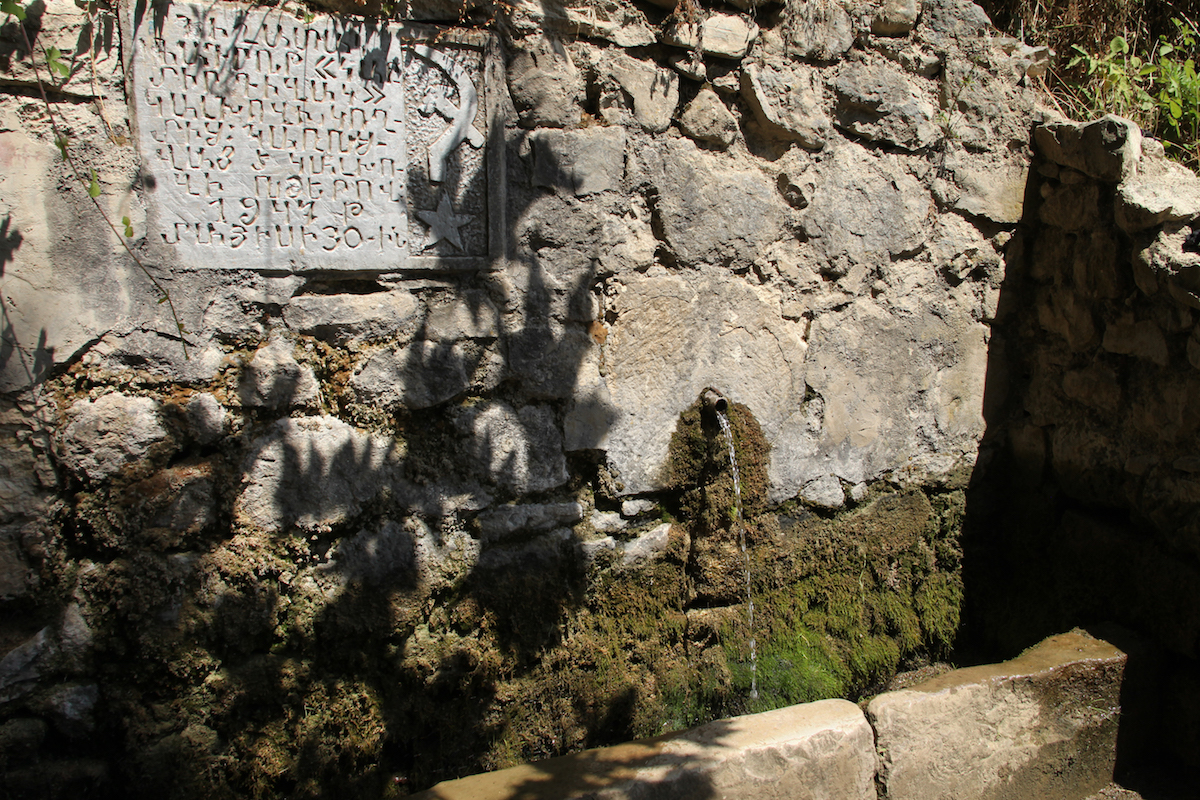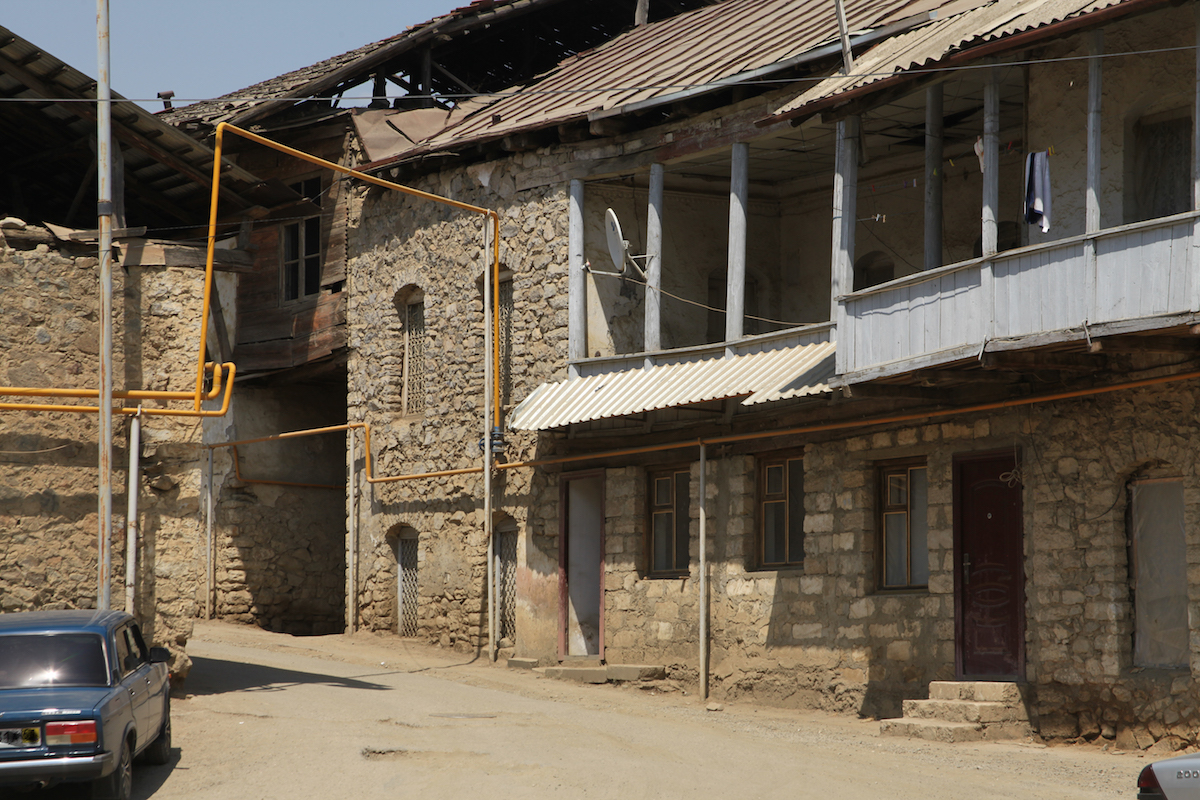My Karabakh - Part I: Hadrut, a donkey, water and a brawl
This is the first story of ‘My Karabakh’, a series written specially for JAMnews by Armenian journalist and writer Mark Grogorian.
Karabakh stories, all parts here

I can speak about myself through this song: every time I go to Karabakh, I feel that the land overpowers me. It often happens that I feel this way even when I am not present there.
In a series of essays, starting with a story about my childhood memories, I will try to tell you just what this small piece of land means for me.
Part one: Hadrut, a donkey, water and a fight
unt Dyshkho didn’t have a donkey.
I considered it a great injustice, because all the neighbouring children, my peers, and the twins Aram and Mika were able to go about on a donkey whenever they wanted, and I could only do so when their grandfather allowed me.
Their grandfather was a grouchy type, and he generally rode around on the donkey himself.
All of them – my Aunt Dyshkho, the twins and their grandfather – they all lived in Hadrut, in a small city in the south of Karabakh. I was six years old when my mother took me and my younger sister there to spend the summer with relatives.
My mother’s relatives lived in Hadrut – aunts, cousins and second-cousins. My grandmother Roza and my great-grandmother Siranush would come to Hadrut quite often.
The family’s ‘nest’ was here, so to speak, of which the guardian was Aunt Dyshkho.
My first memories about Hadrut, as you can see, are connected entirely with women. It was a woman’s world, in which Dyshkho reigned over everything and everyone. When she got down to work about the house – which she did every morning – I had to leave, because somehow, in some magical way, I always ended up getting in her way.
Which would sometimes earn me the wrath of her broom.

n my little boy’s world of Hadrut, I had one important thing to do: every morning I went to the spring for water. The spring was in a small gorge about two-hundred meters from our home. There was a path that led to the spring, curving around the incline of a hill.
First it would curve downwards, with a wooden fence on the right side, along which beans curled and grew. Below the fence, there was a gurgling little stream.
The path then emerged into sunlight, onto a path laid with small thin stones. They were sharp and could easily cut you if you mishandled them. But on this part of the path, there was many a treasure for little boys – cartridges.
The casings of bullets fired from automatic weapons were not so special because you could find them rather often. It was less common to find paper cartridges from hunting rifles. One could exchange one of these cartridges, if it was in good condition, for five automatic cartridges. I never heard and, of course, never saw anyone shooting on that spot, but the cartridges turned up regularly and dependably.
At last, the path came out on a walnut grove at the bottom of the gorge. There was a spring in the middle of the grove where we got our water from. On the wall over the metal faucet of the spring there was a stone with the inscription: “In memory [of soldiers wholost their lives in WWII], from the Hadrut kolkhoz [collective farm] ‘Red Plowman’. Erected by the collective farm on 30 May 1947.” Next to it was a hammer, a sickle and a star carved into the stone.
It was always more enjoyable to descend to the spring than to return up it. Especially since I’d go down the hill with an empty bucket, and return up with one full of water. I don’t understand how at six years old I was able to carry a full bucket of water home several times a day.
ut after fulfilling my duties as water boy, I was free and often set little boats sailing down the river near the fence. The twins and I often tried making little boats out of everything we could find – wood chips, pieces of wooden plank and pine bark, which was in great deficit as pine trees were not nearby.
Little boats made from walnuts halves were valued the most.
You had to crack the walnut carefully in order to make sure it didn’t split and give you an uneven half. It had to be cleaned out, and then you had to make a little hole in its shell in which you’d then stick a match. The match was then adorned with a piece of paper; having made its way to sea, these little boats would then quickly capsize.
But they were the prettiest to make and look at.
Another pastime was to take little matchboxes, pull out the inner box by about two-thirds, and then cleverly bend the outside portion and you’d end up with a little truck.Of course, it didn’t have wheels, but a child’s imagination is capable of many things.
very night when it would get dark outside, the sky would be light up with the trails of dozens of flares in red, green and blue. Tracer ammunition flew into the sky like magic insects. My mother said that this nightly display was set off by border-guards in order to catch spies and other such unsavory individuals. I loved the display – in Yerevan you could see fireworks only on 9 May and 7 November.
Here, in Karabakh, it was a nightly event.
You don’t have to ask me whether I’m sure of what I saw. You don’t have to calculate that the border is far from Hadrut, and that such a thing couldn’t be…It probably couldn’t have been. But I firmly stand by what I said: every night I saw these beautiful fireworks, and I even grew bored of them towards the end of my time in Hadrut.
My impressions of Hadrut are, of course, naive. But what else can you expect from the memories of a six-year-old boy?
But I have one more memory from my time in Hadrut. This is not a child’s memory.

y mother and I were visiting the twins and their family, when all of a sudden we heard a commotion outside. The women in the house got up quickly and forbade us from going out.
We heard screams coming in from the street, cursing, voices clambering one over the other. The twins and I were able to sneak a peek outside.
It was a fight. A terrifying, frenzied fight between Armenians and Azerbaijanis. I saw a short scene which I’ve never forgotten: a young, shirtless man in a fit of anger lifting up an enormous stone and bringing it clashing down on the head of another. I closed my eyes in terror.
I don’t know what happened next. And I don’t know which of these two people was Armenian, and which Azerbaijani… but is that even important?
And how do I really know at all that it was Armenians and Azerbaijanis fighting?
Probably because the adults spoke of it among themselves, and I remembered their words.
But more than a half-century has passed since then, and I still remember my childlike feeling and lack of understanding: why did Armenians and Azerbaijanis all of a sudden decide to beat each other up in a frenzy in Hadrut in the summer of 1964?


















